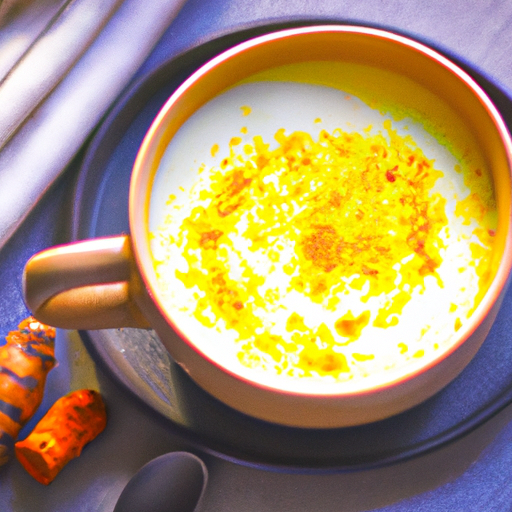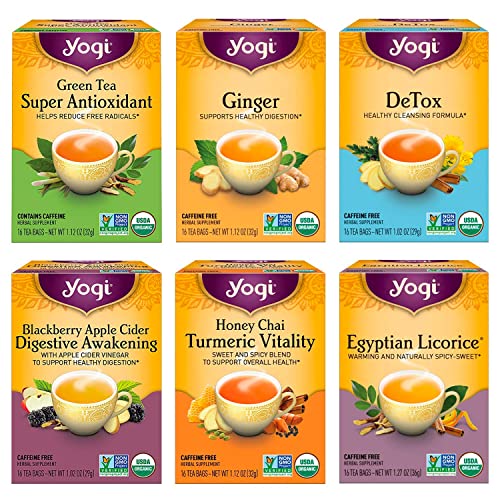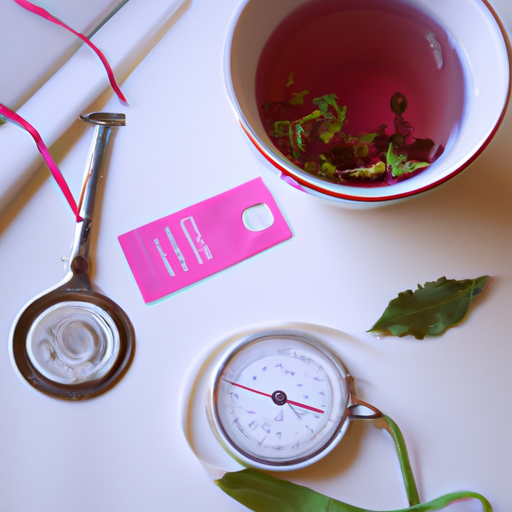Have you ever found yourself wondering how many times you can steep a Yogi tea bag? Well, you’re not alone. As a tea enthusiast myself, I’ve often pondered over this question. It’s like trying to squeeze every last drop of goodness out of that little bag of herbal delight. And let me tell you, the answer might surprise you.
In this article, we will dive deep into the world of steeping Yogi tea bags. We will explore the factors that affect the steeping time, the recommended steeping times for different flavors, and even tips for achieving the perfect steep. But that’s not all – we’ll also discuss the art of re-steeping and what to do with those used tea bags.
So, grab your favorite mug, get cozy, and join me on this journey to unlock the full potential of enjoying Yogi tea to the fullest. It’s time to steep, sip, and savor the goodness.
Key Takeaways
- Steeping time varies based on the type of Yogi tea and personal preference.
- Shorter steeping times (3-4 minutes) are recommended for lighter teas like green tea or herbal blends.
- Longer steeping times (5-7 minutes) are recommended for stronger teas like black tea or chai.
- Re-steeping Yogi tea bags is possible, with a recommended steeping time of around 2-3 minutes for subsequent infusions.
Understanding the Steeping Process
To steep your Yogi tea bag, you’ll want to let it soak in hot water for the recommended amount of time to fully infuse the flavors and create a soothing, aromatic beverage. Understanding the steeping process is essential to achieve the perfect cup of tea.
Different tea steeping techniques can result in varying flavors and strengths. Steeping time plays a crucial role in this process as it determines how much flavor and aroma is extracted from the tea leaves.
Shorter steeping times, such as 3-4 minutes, are ideal for lighter teas like green tea or herbal blends. This allows for a more delicate flavor profile and prevents the tea from becoming bitter. On the other hand, stronger teas like black tea or chai benefit from longer steeping times of 5-7 minutes. This extra time allows for a fuller-bodied taste and a more robust aroma.
Factors that affect the steeping time include the type of tea, the size of the tea leaves, and personal preference. Experimenting with different steeping times can help you find the perfect balance for your taste buds. So go ahead, indulge in the art of tea steeping and discover the benefits of different steeping times for yourself.
Factors that Affect the Steeping Time
Quickly savor the steeping process as various variables affect the time it takes for your delightful Yogi tea to fully infuse. Factors affecting taste and aroma are influenced by the type of tea used, water temperature, and steeping time. Adjusting these variables can help you customize your tea experience and create the perfect cup every time.
The type of tea used plays a significant role in determining the steeping time. Herbal and black teas require a longer steeping time of 4-6 minutes, while green and white teas only need 2-4 minutes. The water temperature also affects the flavor profile. Boiling water is suitable for herbal and black teas, while green and white teas should be steeped in water that is slightly cooler, around 175°F (80°C).
To adjust the steeping time, you can experiment with different durations until you find your preferred strength. Steeping for a shorter time will result in a milder flavor, while a longer steeping time will intensify the taste. Remember to cover your cup or teapot while steeping to retain the heat and maximize flavor extraction.
Understanding the factors that affect steeping time allows you to tailor your Yogi tea experience to your liking. Now, let’s explore the recommended steeping times for different Yogi tea flavors to ensure that you enjoy the perfect cup every time.
Recommended Steeping Times for Different Yogi Tea Flavors
Explore the wonderful world of Yogi tea flavors and discover the recommended steeping times that’ll bring out the full essence of each unique blend. Yogi tea offers a wide range of flavors, each carefully crafted to provide a delightful and invigorating experience.
Here are some flavor recommendations and their corresponding steeping times:
-
Yogi Bedtime Tea: This soothing blend of chamomile, valerian root, and passionflower is perfect for winding down after a long day. Steep for 7-8 minutes to release the calming properties of these herbs and promote a restful sleep.
-
Yogi Detox Tea: With ingredients like dandelion and burdock root, this cleansing blend is designed to support your body’s natural detoxification process. Steep for 5-6 minutes to unlock its purifying benefits.
-
Yogi Green Tea Blueberry Slim Life: This refreshing blend combines green tea with blueberry and Garcinia Cambogia fruit extract to support a healthy weight management program. Steep for 3-4 minutes to enjoy the antioxidant-rich flavors and potential health benefits.
-
Yogi Ginger Tea: Known for its warming and soothing properties, this blend of ginger, lemongrass, and licorice root is perfect for digestive support. Steep for 6-7 minutes to fully extract the flavors and potential health benefits of ginger.
By following these recommended steeping times, you can ensure you’re getting the most out of your Yogi tea experience. In the next section, I’ll share some tips for achieving the perfect steep, so stay tuned!
Tips for Achieving the Perfect Steep
Get ready to elevate your tea game with these expert tips for achieving the perfect steep, resulting in a rich and flavorful cup that will transport you to tea bliss. When it comes to achieving optimal flavor in your Yogi tea, finding the right steeping temperature is key. Each Yogi tea flavor has its own recommended steeping time, ranging from 5 to 7 minutes. To ensure you achieve the best flavor, it’s important to follow these guidelines.
First, start by boiling fresh, filtered water. The temperature of the water can greatly impact the flavor of your tea. For herbal teas, a temperature of 205°F (96°C) is ideal, while for green and black teas, a slightly lower temperature of 175°F (79°C) works best. Steeping the tea for the recommended time allows the flavors to fully develop, resulting in a more robust cup.
To help you keep track of the perfect steeping time for each Yogi tea flavor, here’s a handy table:
| Tea Flavor | Steeping Time |
|---|---|
| Bedtime | 7 minutes |
| Detox | 5 minutes |
| Green Tea | 6 minutes |
By following these tips and finding the right steeping temperature, you can achieve a cup of Yogi tea that is bursting with flavor. So, get ready to savor every sip and experience tea bliss. Now, let’s explore the next step in enjoying your Yogi tea: re-steeping the tea bags.
Re-steeping Yogi Tea Bags
Once you’ve enjoyed the initial cup of Yogi tea, don’t be afraid to give those tea bags a second chance to steep and unleash a whole new world of flavors. Re-steeping Yogi tea bags not only allows you to maximize the flavor and get the most out of your tea, but it also offers several benefits.
The first steeping extracts the primary flavors from the tea leaves, but subsequent steepings can bring out different notes and complexities that you may have missed initially. By re-steeping, you can truly appreciate the depth and richness of the tea blend.
To maximize the flavor when re-steeping Yogi tea bags, make sure to adjust the steeping time. Since the tea leaves have already been partially extracted, a shorter steeping time of around 2-3 minutes is recommended. This’ll prevent over-extraction and bitterness, ensuring a smooth and enjoyable cup of tea.
Once you’ve re-steeped your Yogi tea bags, you may wonder what to do with them. Instead of throwing them away, consider using them for other purposes. Used tea bags can be placed in the refrigerator to cool and then applied to the eyes to reduce puffiness and soothe tiredness. They can also be added to a warm bath or used as a compress for skin irritations. The possibilities are endless!
Now that you know the benefits of re-steeping Yogi tea bags, let’s explore what you can do with the used tea bags to make the most out of them.
What to Do with Used Tea Bags
Discover the endless possibilities of repurposing your used tea bags and let them bring a soothing and rejuvenating touch to your everyday life. When it comes to recycling tea bags, there are numerous creative uses that can turn your used bags into something more than just a one-time beverage. Here are four ideas to make the most out of your used tea bags:
-
Compost: Tea bags are a great addition to your compost pile. They break down easily and add nutrients to the soil, making it richer and more fertile for your plants.
-
Soothing eye compress: After enjoying your cup of Yogi tea, let the used tea bags cool down and place them over your eyes. The natural antioxidants and anti-inflammatory properties in the tea can help reduce puffiness and soothe tired eyes.
-
Natural air freshener: Dry out your used tea bags and place them in a bowl or sachet to freshen up your living space. The subtle aromas of the tea will add a calming and pleasant scent to any room.
-
DIY bath soak: Collect your used tea bags and tie them together with a string. Drop the bundle into your warm bathwater and let the tea infuse the water with its relaxing properties. It’s a simple and inexpensive way to create a spa-like experience at home.
Repurposing your used tea bags isn’t just a sustainable practice, it’s also a way to enjoy the benefits of Yogi tea beyond just drinking it. By exploring these creative uses, you can continue to experience the soothing effects of the tea long after you’ve finished your cup.
Now, let’s delve into some final thoughts on enjoying Yogi tea to the fullest.
Final Thoughts on Enjoying Yogi Tea to the Fullest
Who would’ve thought that a simple tea bag could unlock a world of relaxation and creativity? Yogi tea has become my go-to beverage for moments of tranquility and inspiration. But to truly enjoy Yogi tea to the fullest, there are a few things I’ve discovered along the way.
Firstly, let’s talk about the benefits of adding honey to Yogi tea. Not only does honey enhance the flavor, but it also brings a multitude of health benefits. Honey’s known for its antibacterial properties and soothing effects on the throat, making it a perfect addition to your cup of Yogi tea.
Next, let’s explore how to enhance the flavor of Yogi tea with spices. Adding spices like cinnamon, cardamom, or ginger can take your tea experience to a whole new level. These spices not only add a delightful aroma but also have their own set of health benefits. Cinnamon, for example, can help regulate blood sugar levels, while ginger aids digestion and boosts immunity.
In conclusion, Yogi tea isn’t just a simple beverage but a gateway to relaxation and creativity. By adding honey, you can enjoy its enhanced flavor and health benefits. And by incorporating spices, you can elevate the taste and reap the advantages they offer. So go ahead, steep that Yogi tea bag, and savor the delightful experience it brings.
Frequently Asked Questions
Can I reuse a Yogi tea bag for more than one steep?
Yes, you can definitely reuse a Yogi tea bag for more than one steep. There are several benefits to multiple steeps, such as extracting additional flavor and getting the most out of the tea leaves.
How long should I let a Yogi tea bag steep for a stronger flavor?
To enhance the flavor of Yogi tea, I recommend steeping the tea bag for a longer duration. This allows the flavors to fully develop, resulting in a stronger taste. Follow best practices for steeping Yogi tea to achieve the desired flavor intensity.
Can I steep Yogi tea without using a tea bag?
Yes, there are alternative brewing methods for Yogi tea that don’t require a tea bag. Some options include using a tea infuser, a tea strainer, or even brewing it directly in a teapot.
Should I squeeze the tea bag after steeping to get more flavor?
Squeezing the tea bag after steeping can enhance flavor extraction. The pressure releases more of the tea’s essence into the cup. This technique is a great way to maximize the taste and enjoy a more robust brew.
Can I use a Yogi tea bag to make iced tea?
Yes, you can use a Yogi tea bag to make iced tea. However, using loose leaf tea for iced tea may yield better results. There are alternative ways to make iced tea with Yogi tea bags as well.
Conclusion
In conclusion, steeping Yogi tea bags is a simple yet crucial step in enjoying a flavorful and satisfying cup of tea. By understanding the factors that affect steeping time and following the recommended guidelines for each flavor, you can ensure a perfect brew every time.
Don’t forget to re-steep your tea bags to maximize their flavor and make the most out of your tea experience. And when you’re done, find creative ways to repurpose your used tea bags. With these tips, you can truly savor the full potential of Yogi tea.










